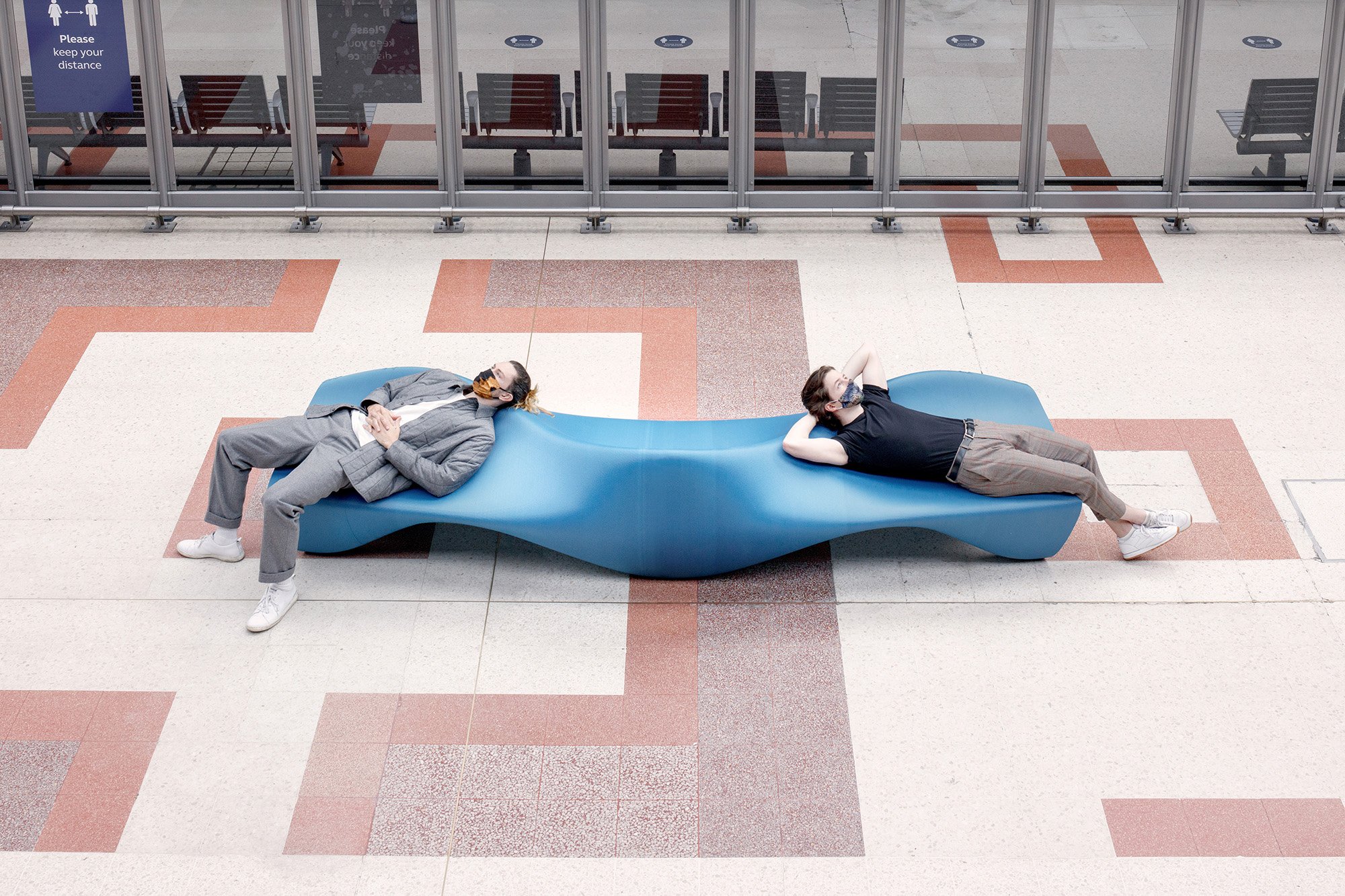Client: Network Rail + LFA
Partner: Ai Build, Luke Brennan-Scott
Location: London Victoria Station, London Bridge Station, Norlington School in Leyton
Dates: First Installed October 2020
Description: Hylemo partnered with Ai-Build to successfully bid for the London Festival of Architecture + Network Rail station seating competition.
The intention from the outset was to utilise Ai-builds proprietary technology to implement large scale 3D printing to produce public seating that would be sustainable in material and energy use and unorthodox in visual form.
The shape of the Beluga bench was defined by the brief to create a 3 to 6 seat bench with a 4 meter length. A front and rear facing staggered seating configuration was selected to create opportunity for easy visual interaction between users. Interpolating points between the seat backs, legs, and flat seat sections into a single extrudable hull defines the material efficient sinuous shape. The curves reach out to the maximum cantilever angle able to be supported during the extrusion of filament from the print head, and non planar layering has been applied to allow the flow of filament to exactly match the curved ends of the shape.
The end result is a highly organic form that reveals its beauty at any scale. From a distance in its strong silhouette, and close up in the densely packed flowing layers that define its shape, taking on a wave-like oceanic quality.
The rolling form and blue colour gave inspiration to the products name, Beluga, the arctic cetacean characterised by its aquatic life and streamline body.
A plethora of materials are available to print from, but PET was selected as the best choice for this application, as it is readily available as a recycled plastic due to its abundant use in products like drinks containers, and because of its durable, robust properties, making it ideal for the hard wearing and outdoor environments street furniture is placed in.
The PET Pellets used for Beluga are up-cycled and were sourced through MCPP, as a by-product of their manufacturing process. At the end of the useful life of the bench, the product can be shredded to provide the material for the next generation of benches, enabling the bench to be a cradle to cradle product.




